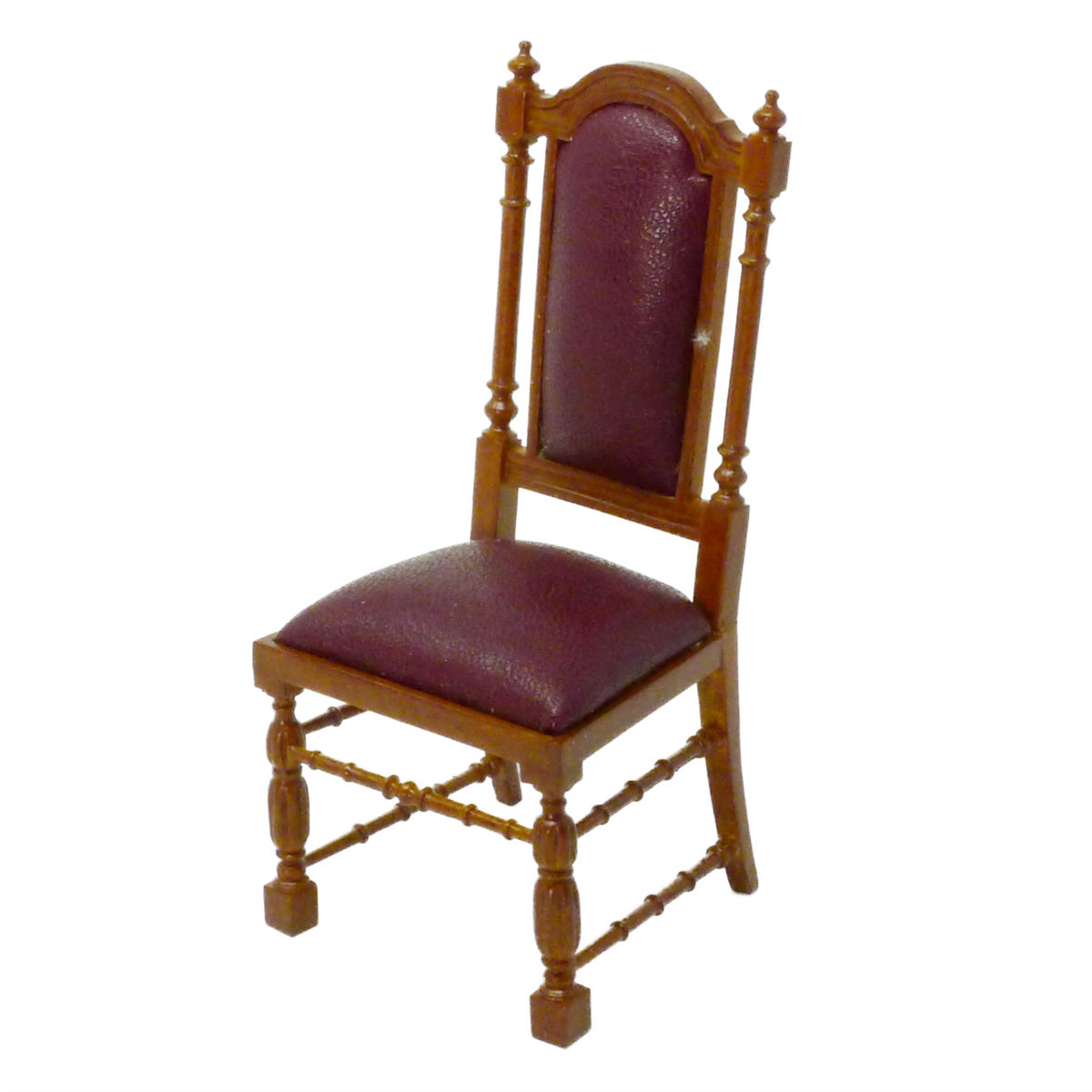Following the style of a Farthingale chair, which had no arms, a low solid padded back; high-raised seat. The chair can be used as a dining chair or as a desk chair with the Davenport desk. Turned baluster legs at the front and plain ones at the rear. The front ones have been fluted which in that period would be called turning because of the method used to achieve the fluting. The top spreader bar (3/16 inches below the seat) at the front of the chair fits into the top bulbous turn of the legs and is carried around the sides of the chair. The turned spreader bars are copied and used just above floor level to reinforce front to back legs. The camelback of the chair and the seat are upholstered in dark red leather, a fabric favoured Jacobean furniture. The turnings on either side of the back are surmounted by finials. Chair measures 4 inches high x 1 3/4 inches wide x 1 3/4 inches deep and is available in a walnut finish.
Jacobean 1620 era Walnut Chair
Following the style of a Farthingale chair, which had no arms, a low solid padded back; high-raised seat. The chair can be used as a dining chair or as a desk chair with the Davenport desk. Turned baluster legs at the front and plain ones at the rear. The front ones have been fluted which in that period would be called turning because of the method used to achieve the fluting. The top spreader bar (3/16 inches below the seat) at the front of the chair fits into the top bulbous turn of the legs and is carried around the sides of the chair. The turned spreader bars are copied and used just above floor level to reinforce front to back legs. The camelback of the chair and the seat are upholstered in dark red leather, a fabric favoured Jacobean furniture. The turnings on either side of the back are surmounted by finials. Chair measures 4 inches high x 1 3/4 inches wide x 1 3/4 inches deep and is available in a walnut finish.
£37.95
Out of stock

